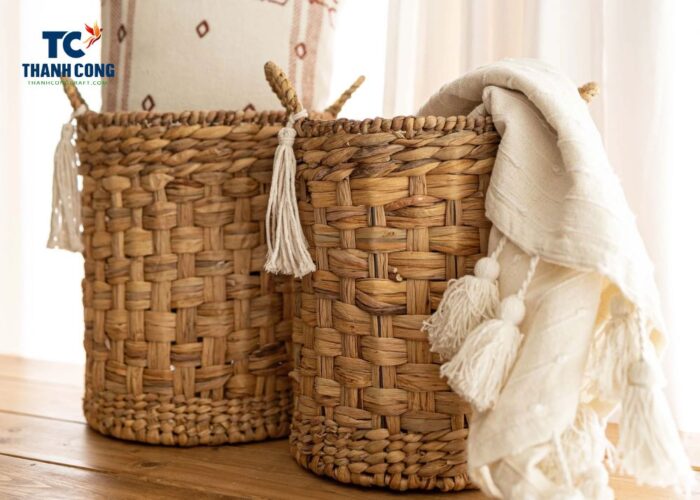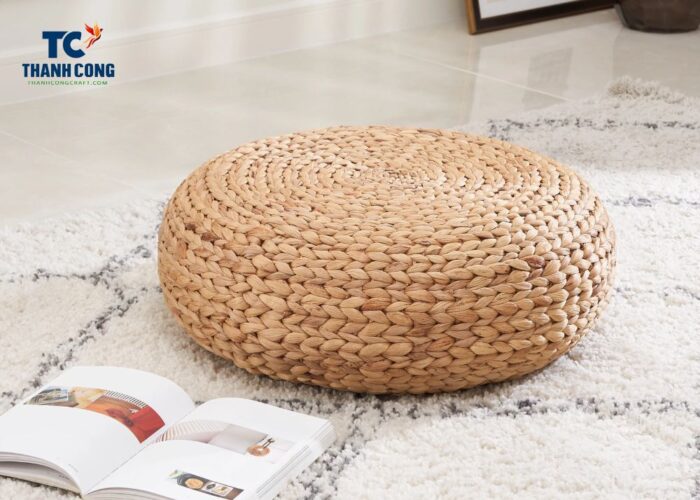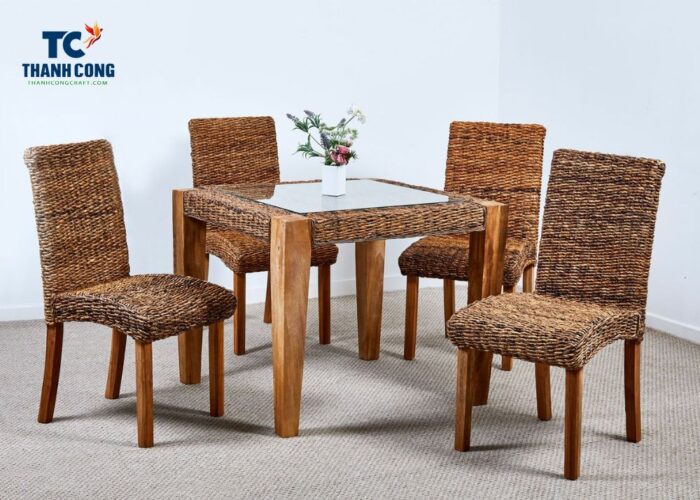Mold can be a persistent issue when it comes to water hyacinth products. As these natural materials are often exposed to moisture, it’s not uncommon for mold to develop over time. Tips for effective Water Hyacinth Treatment for mold? fear not, for there are effective ways to address this problem and restore the beauty and longevity of your water hyacinth items. Let’s dive in and discover how to effectively treat water hyacinth for mold
Contents [hide]
1. Why does Water Hyacinth go moldy?
Water hyacinth is prone to developing mold due to several factors:
- Moisture: Water hyacinth is often used in humid or damp environments, such as near bodies of water or in areas with high humidity levels. The constant exposure to moisture provides an ideal breeding ground for mold.

- Organic Material: Water hyacinth is a natural plant material, and mold thrives on organic matter. The fibers and structure of water hyacinth provide ample nutrients for mold to grow.
- Lack of Air Circulation: Water hyacinth items are often woven or tightly packed, which can limit air circulation. Adequate ventilation is crucial in preventing mold growth, and a lack thereof can promote mold development.
- Environmental Conditions: Environmental factors such as temperature, humidity, and the presence of spores can influence mold growth. If the conditions are favorable, mold can proliferate rapidly.
2. Effective Water Hyacinth Treatment for Mold?
Here’s a brief overview of effective treatments to address mold on water hyacinth products:
- Dry and Ventilate: The primary step in preventing and treating mold on water hyacinth is to keep the items dry and well-ventilated. Avoid exposing them to prolonged moisture, and ensure they have proper air circulation. If your items get wet, allow them to thoroughly air dry before storing them.
- Regular Cleaning: Periodically clean your water hyacinth products to remove dust, dirt, and any surface mold. Use a soft brush or cloth to gently scrub the affected areas. Avoid using excessive water during cleaning to prevent further moisture absorption.
- Sunlight Exposure: Natural sunlight can be an effective mold deterrent. Place your water hyacinth items in direct sunlight for a few hours, as mold thrives in dark and damp conditions. However, be cautious not to overexpose them, as excessive sunlight can cause the material to weaken or fade.
- Vinegar Solution: A diluted vinegar solution can help eliminate mold. Mix equal parts of white vinegar and water and apply it to the affected areas using a cloth or sponge. Allow it to sit for some time, then rinse and thoroughly dry the item.

- Baking Soda Paste: Create a paste by mixing baking soda with water. Apply this paste to the moldy areas, gently scrub, and then rinse and dry the item.
- Commercial Mold Cleaners: There are commercial mold cleaning products available that can effectively remove mold from water hyacinth. Follow the manufacturer’s instructions carefully when using these products.
- Preventative Treatments: To prevent future mold growth, consider using a mold-resistant spray or applying a clear sealant to your water hyacinth items. These treatments can create a protective barrier against moisture and mold.
By following these effective treatments and maintaining a dry and well-ventilated environment for your water hyacinth products, you can help ensure their longevity and beauty while keeping mold at bay.
3. Can mold on Water Hyacinth make you sick?
Mold on water hyacinth, like mold on many other surfaces, can potentially cause health issues, especially if you are sensitive or allergic to mold. Mold produces allergens, irritants, and mycotoxins, which can lead to various health problems when inhaled or come into contact with the skin.
To minimize health risks, it’s essential to take precautions when handling moldy water hyacinth products. Wear protective gear, such as gloves and a mask, and follow proper cleaning and mold removal procedures as outlined in my earlier responses. If you experience severe or persistent health issues related to mold exposure, it’s advisable to consult a healthcare professional.
4. Tips for Maintaining Water Hyacinth Furniture
Maintaining water hyacinth furniture requires some care and attention to ensure its longevity and beauty. Here are some useful tips to help you keep your water hyacinth furniture in excellent condition:
- Dust and dirt can accumulate on water hyacinth furniture over time. Use a soft brush or a vacuum cleaner with a brush attachment to remove loose debris. Regularly wipe the furniture with a damp, clean cloth to keep it clean. Prolonged exposure to direct sunlight can cause the natural fibers of water hyacinth to weaken and fade. Position your furniture away from direct sunlight or use curtains or blinds to protect it from harsh sunlight.
- Water hyacinth is susceptible to moisture and mold. Maintain a consistent indoor humidity level and avoid placing the furniture in damp areas. If the furniture gets wet, allow it to air dry completely. To prevent scratches and damage, use furniture pads or felt protectors on the legs and bottom of water hyacinth furniture when placing it on hard floors.

- Periodically rearrange or rotate the furniture to ensure even wear and exposure. This prevents overuse of specific areas and helps maintain the overall appearance. Be cautious with liquids near water hyacinth furniture. Clean up spills promptly to prevent stains and damage to the material.
- If you live in a humid environment, consider using a dehumidifier to control moisture levels. Apply a mold-resistant treatment to your furniture to prevent mold growth. Or if you need to clean stains or dirt, use a mild soap solution with water. Test a small, inconspicuous area first to ensure it doesn’t damage the fibers. Avoid using harsh chemicals or abrasive cleaners.
- If you plan to store water hyacinth furniture for an extended period, do so in a dry, well-ventilated area. Cover it with a breathable cloth or furniture cover to protect it from dust. Periodically inspect your water hyacinth furniture for signs of wear, damage, or loose weaving. Address any issues promptly to prevent further deterioration.
In conclusion, these tips for effective water hyacinth treatment for mold offer a practical and proactive approach to preserving your water hyacinth items. By maintaining a dry and well-ventilated environment, regular cleaning, and applying appropriate cleaning methods when mold appears, you can ensure the longevity and beauty of your water hyacinth possessions. Remember that prevention is key, and taking these proactive measures can help you enjoy your water hyacinth items without the worry of mold.


